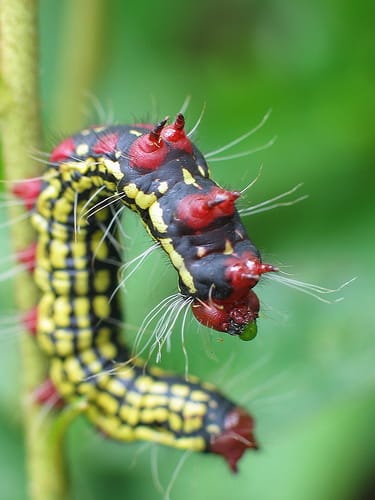Source(s): Jacob G Price
Azalea caterpillars feed almost exclusively on azaleas. They usually feed in groups and emerge mostly in August or September. These caterpillars raise their head and posterior in unison when disturbed. Can defoliate plants if left untreated.
Azalea Caterpillar Description
The immature caterpillar is approximately 1/2 inch long and reddish to brownish-black with white and yellow stripes. The mature caterpillar is about 2 inches long, black, and has 8 yellow to white longitudinal broken stripes. The head and legs are crimson or reddish in color.
Life Cycle
Little is known about this insect. There seems to be only one generation per year. Eggs are deposited by the in masses of 80-100 on the underside of the leaf. The first-instar caterpillars feed in a cluster side by side unless disturbed. The adult form is a light brown moth with a wingspan of approximately two inches.
Control
Bacillus thuringiensis (Dipel) may be used when the larvae are small. Sevin, malathion, horticultural oils and cyfluthrin are products recommended. Follow label recommendations for chemicals. If the numbers are small enough they can be removed by hand. Larger caterpillars must be sprayed directly to control because of decreased eating when nearing pupae stage.
Resource: Azalea Caterpillar
- Growing Asparagus: A Luxury Vegetable - September 24, 2013
- Frizzle Top in Sago Palms - September 24, 2013
- Growing Onions in the Home Garden - September 24, 2013
